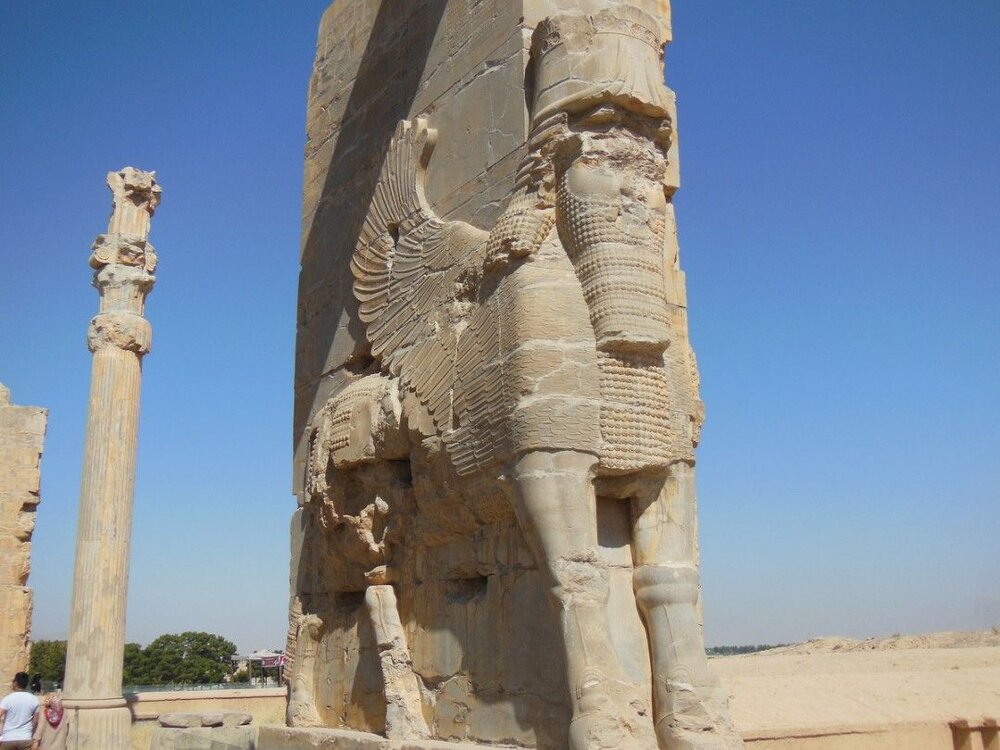Bukan arts show Iranian originality of Persepolis decorations

TEHRAN - Bukan’s collection of glazed bricks shows the Iranian originality of similar motifs and bas-reliefs that adorn the UNESCO-registered Persepolis, a senior researcher with the National Museum of Iran has said.
“Some researchers have doubts about the originality of designs and reliefs of Persepolis, especially the designs of winged creatures, as being made by Iranians, which that idea can be refuted because Bukan bricks also bear those motifs,” Yousef Hassanzadeh explained.
Moreover, motifs and designs of Bukan bricks have already been seen in Assyrian works of art, the archaeologists stated.
Dating back to the 7th or 8th centuries BC, the bricks bear a wide variety of motifs such as winged lions and bulls with human heads, mythological figures, birds of prey, deer, and floral or geometric designs.
Being looted and smuggled out of Iran some four decades ago, the decorated bricks were returned home from Switzerland last year. They were originally been excavated in the Qalaichi archaeological sites in western Iran near the city of Boukan. Qalaichi was once the capital of the Mannaean kingdom.
Situated about 70 km from the Iranian city of Shiraz, Persepolis was the capital of the Persian Empire during the Achaemenid era (c. 550 – 330 BC). Its construction began in 521 BC by order of Darius the Great as part of a vast program of monumental constructions focused on emphasizing the unity and diversity of the Achaemenid Persian Empire, the legitimacy of royal power, and showing the greatness of his kingdom.
The works of Persepolis attracted workers and artisans from all the satrapies of the empire and therefore its architecture resulted from an original combination of forms from these provinces that created a Persian architectural style already outlined in Pasargadae and that is also found in Susa and Ecbatana.
Persepolis comprises a huge palatial complex on a monumental terrace that supports multiple hypostyle buildings that had specific ceremonial, ritual, emblematic or administrative functions: audiences, royal apartments, administration of the treasury, or reception.
Near the terrace were other items: royal tombs, altars, and gardens. There were also the houses of the lower city, of which almost nothing visible remains today.
Many bas-reliefs carved on the steps and doors of the palace represent the diversity of the peoples that made up the empire. Others enshrine the image of a royal protective, sovereign, legitimate and absolute power, where Xerxes I is designated as the legitimate successor of Darius the Great.
AFM
Leave a Comment